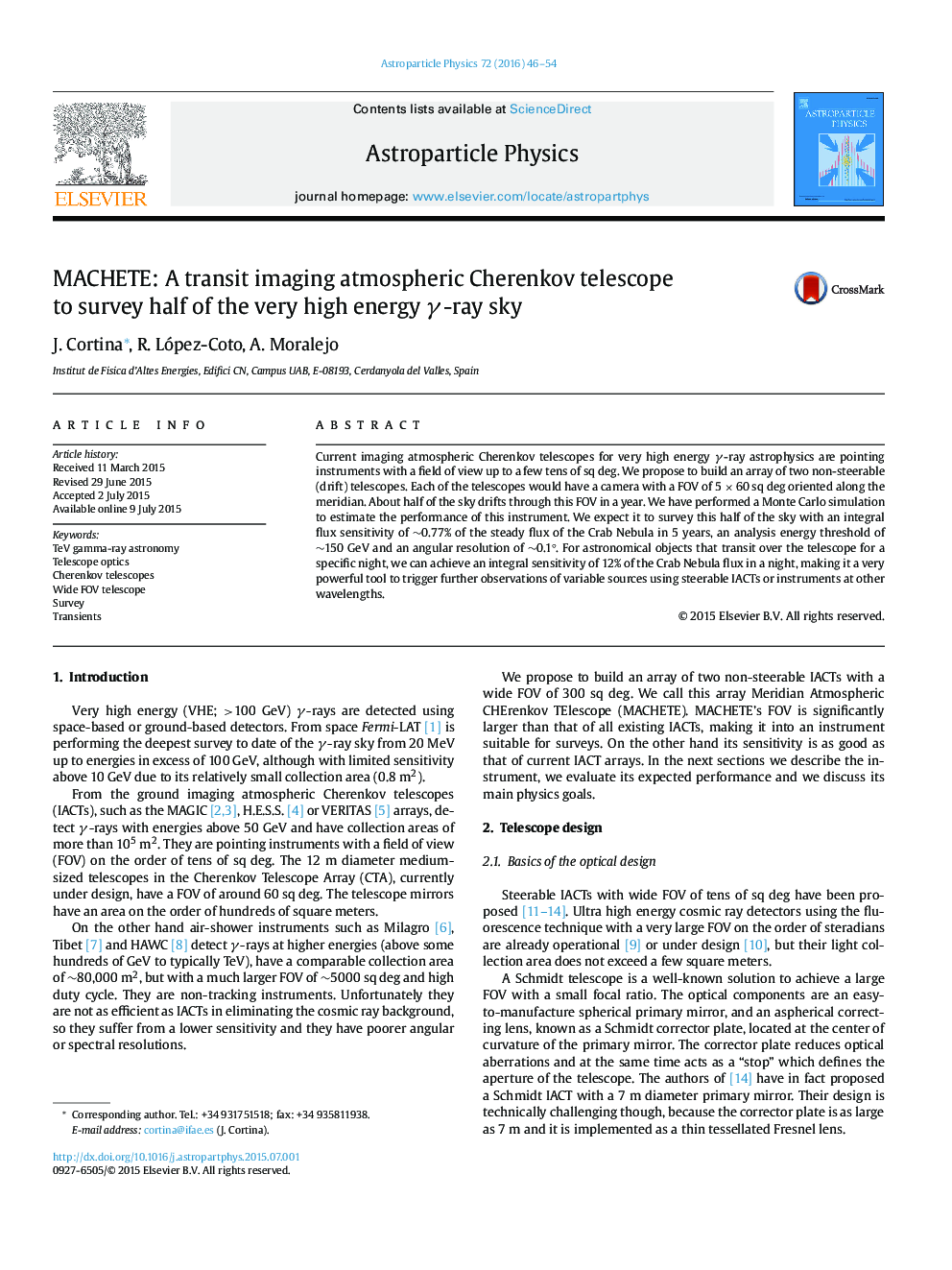| Article ID | Journal | Published Year | Pages | File Type |
|---|---|---|---|---|
| 1770560 | Astroparticle Physics | 2016 | 9 Pages |
Current imaging atmospheric Cherenkov telescopes for very high energy γ-ray astrophysics are pointing instruments with a field of view up to a few tens of sq deg. We propose to build an array of two non-steerable (drift) telescopes. Each of the telescopes would have a camera with a FOV of 5 × 60 sq deg oriented along the meridian. About half of the sky drifts through this FOV in a year. We have performed a Monte Carlo simulation to estimate the performance of this instrument. We expect it to survey this half of the sky with an integral flux sensitivity of ∼0.77% of the steady flux of the Crab Nebula in 5 years, an analysis energy threshold of ∼150 GeV and an angular resolution of ∼0.1°. For astronomical objects that transit over the telescope for a specific night, we can achieve an integral sensitivity of 12% of the Crab Nebula flux in a night, making it a very powerful tool to trigger further observations of variable sources using steerable IACTs or instruments at other wavelengths.
